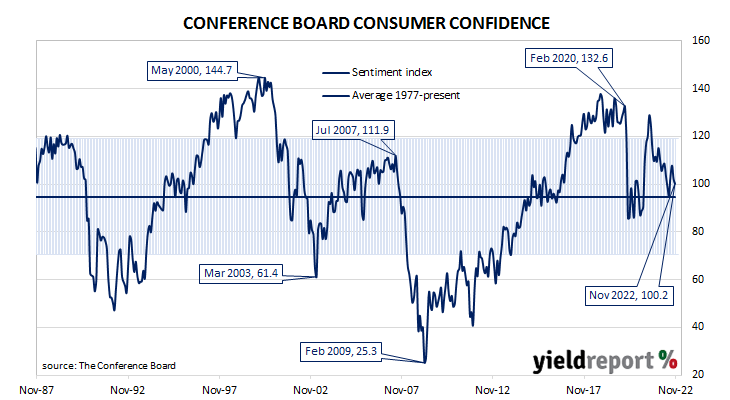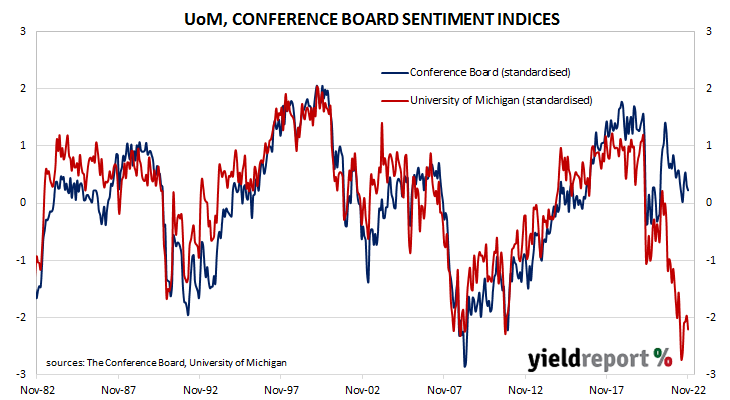Summary: Conference Board Consumer Confidence Index falls in November, essentially in line with expectations; views of present conditions, short-term outlook both deteriorate; US economy “has lost momentum”.
US consumer confidence clawed its way back to neutral over the five years after the GFC in 2008/2009 and then went from strength to strength until late 2018. Measures of consumer confidence then oscillated within a relatively narrow band at historically high levels until they plunged in early 2020. Subsequent readings then fluctuated around the long-term average until March 2021 when they reached elevated levels. However, a noticeable gap has since opened between the two most-widely followed surveys.
The latest Conference Board survey held during the first half of November indicated US consumer confidence has resumed deteriorating. November’s Consumer Confidence Index registered 100.2 on a preliminary basis, essentially in line with the median consensus figure of 100.0 but down from October’s final figure of 102.2.
“Consumer confidence declined again in November, most likely prompted by the recent rise in gas prices,” said Lynn Franco, a senior director at The Conference Board.
US Treasury yields finished the day higher. By the close of business, the 2-year Treasury bond yield had gained 3bps to 4.47%, the 10-year yield had added 7bps to 3.75% while the 30-year yield finished 8bps higher at 3.80%.
In terms of US Fed policy, expectations of higher federal funds rates over the next 12 months remained largely unchanged. At the close of business, December contracts implied an effective federal funds rate of 4.13%, 30bps higher than the current spot rate while February contracts implied a rate of 4.735%. December 2023 futures contracts implied 4.70%, 87bps above the spot rate.
Consumers’ views of present conditions and the near-future both deteriorated. The Present Situation Index declined from October’s revised figure of 138.7 to 137.4 while the Expectations Index fell from a revised figure of 77.9 to 75.4.
Franco pointed to the decline in the Present Situation Index as an indicator the US economy “has lost momentum as the year winds down.”
The Consumer Confidence Survey is one of two widely followed monthly US consumer sentiment surveys which produce sentiment indices. The Conference Board’s index is based on perceptions of current business and employment conditions, as well as respondents’ expectations of conditions six months in the future. The other survey, conducted by the University of Michigan, is similar and it is used to produce an Index of Consumer Sentiment. That survey differs in that it does not ask respondents explicitly about their views of the labour market and it also includes some longer-term questions.



